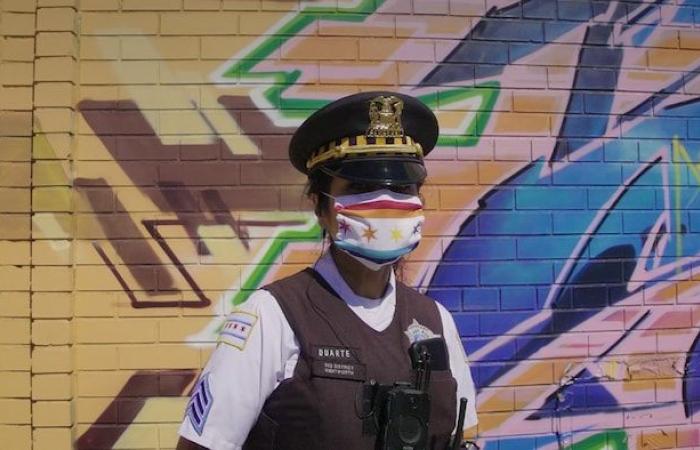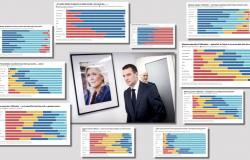The intervention cameras deployed on the uniforms of police officers from different services across the country disappoint the public’s expectations, note several experts.
There is a disconnect between what the public thought they would get and what they actually got
, explains sociology professor Christopher Schneider of Brandon University in Manitoba. He points out, among other things, that Canadians do not often have the opportunity to watch intervention camera recordings.
This is not the result that was promised when [l’ancien] Toronto Mayor John Tory and Prime Minister Justin Trudeau advocated for intervention cameras
believes Patrick Watson, assistant professor of criminology and sociology at the University of Toronto. They suggested it would lead to greater transparency and accountability of the police.
Open in full screen mode
Intervention cameras would offer “an element of transparency and accountability which, I think, would be very important for the police forces of this country,” argued the Canadian Prime Minister in 2020. (Archive photo)
Photo: The Canadian Press / Adrian Wyld
Full professor at the School of Criminology at the University of Montreal, Rémi Boivin, adds that the public has wrongly based its hopes on the American example, while the laws are very different here. The expectations that are dictated by the American situation will never be [satisfaites] in Canada
he believes.
The American experience
In the United States, the public can often view intervention camera recordings shortly after the events.
For example, Frank Tyson, a 53-year-old African-American, died following a police intervention in Ohio on April 18. A few days later, the police Canton disclosed videos from police intervention cameras.
Open in full screen mode
A black man identified as Frank Tyson, 53, lies on the ground after being arrested at a bar in Canton, Ohio. (Archive photo)
Photo: Reuters / CANTON POLICE DEPARTMENT
In comparison, Toronto police have not released the videos of Devon Fowlina man who was injured by police bullets in February 2023.
Devon Fowlin and his lawyer had nevertheless called on the police to release these videos.
A police officer is notably accused of aggravated assault in this case and Ontario law stipulates that a document can remain confidential if it is related to an investigation or the execution of the law.
Police services can also refuse to release a video to protect the privacy of the people in it.
This is a completely justified provision of the law, according to Rémi Boivin. Body cameras are activated in people’s worst moments. We can see their identity, their living environment. We see them in completely unusual circumstances.
Christopher Schneider, however, believes that this measure prevents videos of public interest from being leaked.
The police do not publish intervention camera videos and they will often invoke or hide behind this idea of privacy.

Open in full screen mode
Christopher Schneider says Canadian police services mostly tend to post anecdotal videos, like this video of Durham Regional Police capturing a kangaroo in December 2023.
Photo: Durham Regional Police
Patrick Watson also warns that even in American states that are the most permissive in terms of disclosure, public opinion can still be manipulated.
When American police forces release a video, they often do so with their own interpretation of events.
There are even public relations firms that get paid by police services to produce a video from intervention camera images.
he explains.
Ontario Newsletter
Subscribe to the Ontario newsletter.
The Chicago Compromise
In Chicago, it is not the police who decide on the disclosure of video recordings. This decision is instead placed in the hands of a civilian body, the Civilian Office of Police Accountability.
The City’s policy aims for disclosure in less than 60 days after an event that calls law enforcement into question.
City residents have an undeniable, and in some cases essential, interest in being informed, in a timely manner and on the basis of information as accurate as possible, of the way in which their police forces carry out their activities.
we can read in its policy.

Open in full screen mode
Chicago launched its intervention camera program in 2015. (File photo)
Photo: Radio-Canada / Frédéric Lacelle
This is an interesting example according to experts, who say that we will have to keep an eye on the results of this citizens’ commission.
I think it’s too protected here, a little too restricted in terms of access. In certain police organizations [américaines]it’s too lax.
He thinks Chicago is somewhere in between, which is a step in the right direction.
But difficult, according to him, to find the ideal model, because there are several issues.
There is the right to know what happened within a reasonable time. There are privacy issues. There are also the rights of police officers
he explains. It’s always that, with cameras, you have the impression that it’s simple, but as soon as you scratch a little, it becomes much more complicated.









